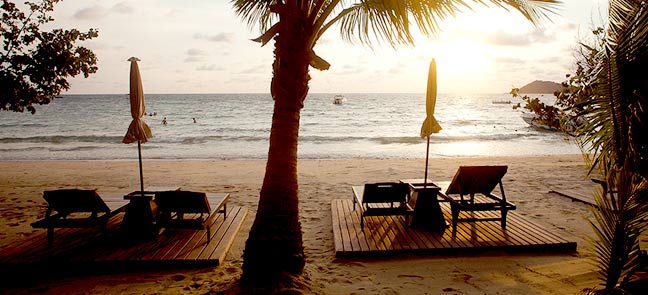 Phuket
Phuket
Phuket does, however, have a downside: Tracts of hideous overdevelopment have spawned unsightly concrete bunkers patronized by budget tour groups from Asia, Russia, and Europe. Areas such as Patong, with its seedy commercial strip and sleazy nightlife, can be a bit much for families or single women travelers in search of tranquillity, but with the arrival of a swish shopping mall, JungCeylon, and the adjoining Millennium Phuket Resort, plus upmarket diners such as The Boathouse on Kata Beach, things, at last, are looking up.
If escape at any cost is what you need, Phuket has heaps of elegant resorts designed for tropical solitude; a good number, such as the Banyan Tree, offer private villas and pools. Evason Phuket even offers a honeymoon villa on its own island, Ko Bon. Expect superlative facilities with levels of service beyond those in Europe. But with prices here way above those even in Bangkok, it’s not ideal for those on a tight budget. If you need to keep costs down, consider the Eastern Gulf islands or lesser known atolls in Phang Nga Bay, or go south to more reasonable Trang.
Even after over 5 years, the impact of the 2004 tsunami, which struck a devastating blow to the resorts along Thailand’s west coast, including Phuket, and across the now up-and-coming region of Khao Lak, cannot be glossed over. Today, most resorts are back to full capacity; many in fact used the disaster as an opportunity to renovate and upgrade. Khao Lak is fast becoming the “next” Phuket, whereas Phi Phi is still struggling to go upmarket. While some may feel put off about visiting this region, tourism is still the mainstay of the economy. Without support from travelers, Thais in this region simply have no chance to get back on their feet.

